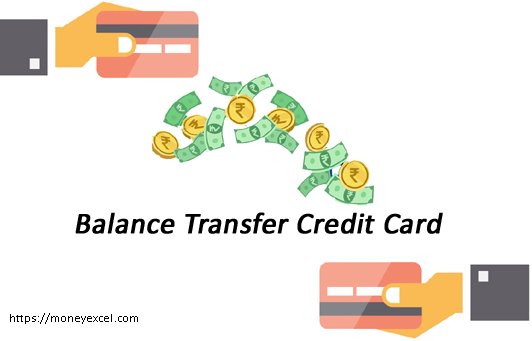Balance Transfer Credit Card facility is widely used to handle credit card dues. If you are worried about your credit card dues and looking for the method to address it, you should use this facility.
A balance transfer facility helps you to reduce your credit burden. As the name indicates, balance transfer credit card facility helps you to transfer your previous credit dues to other card at the lower the interest rate. It is one of the best method to lower down payment dues. Apart from reducing debt, this method also offers multiple other benefits.
Also Read – 10 Methods to Pay Credit Card Bill Online & Offline
The balance transfer credit card facility is provided by multiple banks. Here is list of bank providing this facility along with benefits.

Balance Transfer Credit Card Facility
ICICI Bank
ICICI Bank offers balance transfer service for existing credit card holders. This facility is given subject to mandatory policy checks. Key features offered by ICICI for this facility are given below.
- You can transfer debt up to 3 Lakh using this facility.
- The repayment tenure can be 3 months or 6 months installments.
- No additional documentation required for using this facility.
- Payment can be in 3 to 6 months installments.
- Interest rate is attractive.
- Minimum outstanding of Rs.15000 is required to avail this facility at ICICI.
The fund will be transfer by ICICI bank to other bank via NEFT or demand draft.
you can opt for this facility by calling ICICI customer care executive or sending SMS BT to 5676766.
State Bank of India
State Bank of India also offers balance transfer credit card facility. You can clear your credit card dues at lower interest rate by availing this facility. Features offered by SBI for balance transfer are given below.
- You can select from two plans (1) 0% Interest for 60 days or (2) 1.7% Interest rate per month for 180 days.
- The processing fees for both these plan are different.
- You can consolidate multiple balances to one by transferring all cards to SBI card.
- You can do balance transfer for a minimum amount of Rs.5000 to a maximum of 75% of your available credit limit.
To avail SBI Balance Transfer facility you can SMS BT to 56767.
HSBC Bank
HSBC Bank also offers this facility. You can transfer outstanding balance from other banks to HSBC credit card. Key features of this facility are given below.
- EMI facility on balance transfer is available.
- You can choose between loan tenure of 3,6,9,12,18 and 24 months.
- You need to pay 1% of the Balance Transfer value as processing fees.
- Rate of interest is 10.99% to 15%.
Kotak Mahindra Bank
Kotak Mahindra Bank also offers balance transfer facility. Key features offered by Kotak Mahindra Bank balance transfer are given below.
- You can make a minimum Credit Card balance transfer of Rs. 2,500.
- There is no maximum amount you can transfer, provided you don’t exceed 75% of the limit on your Credit Card.
- Depending on the amount you transfer, a processing fee will be charged.
- No interest is charged if payment for balance transfer is made within 90 days.
You can avail this facility by Kotak Mahindra Netbanking for mobile banking.
Balance transfer is done by NEFT or via cheque.
Also Read – Best Credit Card For 2020 – Top Credit Card Picks
HDFC Bank
HDFC Bank also provide facility for balance transfer.Key features of HDFC balance transfer facility are given below.
- HDFC offers this facility as loan and you need to pay it via EMI.
- The EMI installment amount is as low as Rs.27 for every Rs.10000.
- No documentation is required for availing this facility.
- Repayments needs to be done in installment of 9 to 48 months.
You can apply for this facility via HDFC net banking, phone banking or via SMS.
Balance Transfer Credit Card – Benefits
Saving on Interest
You can transfer your outstanding balance from your current credit card to the new card with lower rate of interest. The lower interest rate will help you in paying dues easily.
Convenience
It is convenient way to reduce your outstanding credit card debt. It is easy to use option, you just need to opt for good card and transfer balance.
Multiple Transfers
You can transfer balance of multiple cards to single card. It is known as multiple transfer. By using this you can consolidate and reduce debt at single go.
Buffer Time
You can get buffer time to pay outstanding due and make it zero or extremely low. It will help you to reduce debt at affordable rate of interest.
Points to consider before opting for balance transfer
- You should look at interest rate offered by new card. The interest rate offered by new card should be lower compared to old card.
- You should have excellent credit score to avail this facility. This facility offered to the customer who is holding credit card for at least year.
- You will get this facility on new card only. It is given only if credit card is not issued by same bank.
- You should look at maximum and minimum amount of outstanding balance that can be transfer at new card.
- You should check credit limit offered by the bank after doing balance transfer.It should not exhaust your credit limit.
- You should carefully look at terms and condition before opting for new balance transfer.
Have you ever opted for balance transfer facility on credit card? Do share your experience in the comment section given below.






